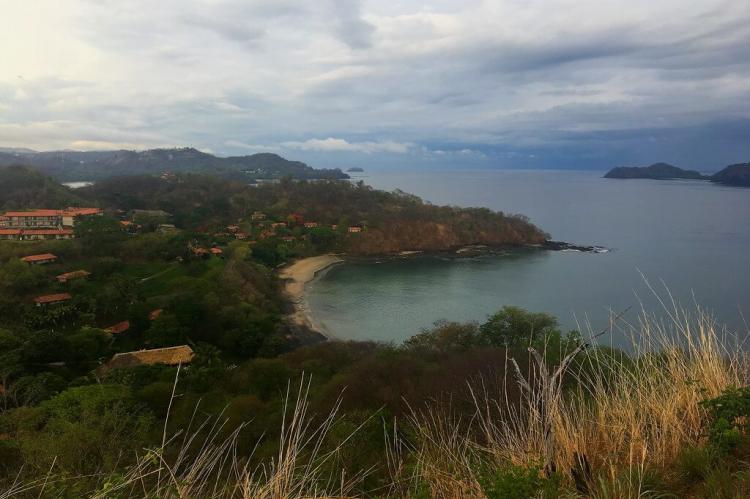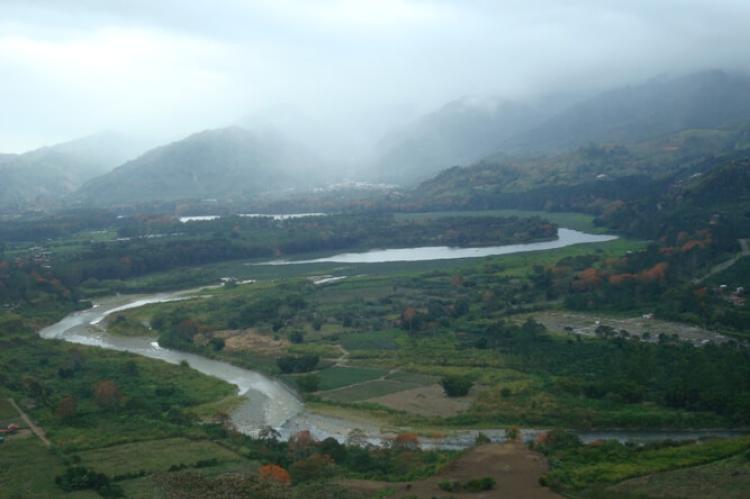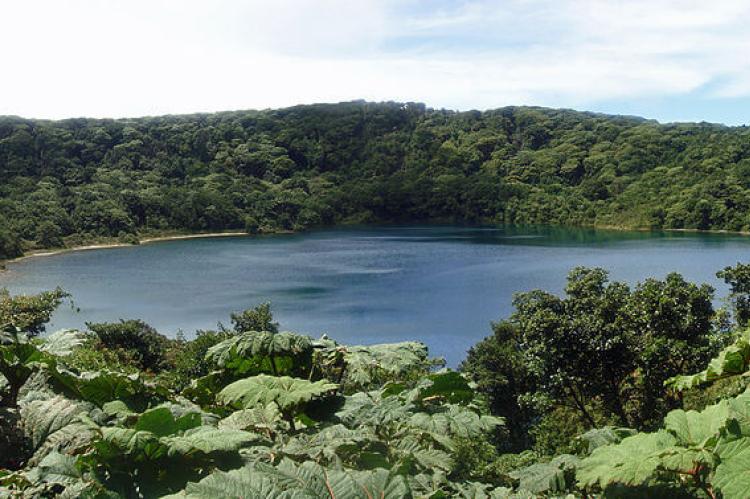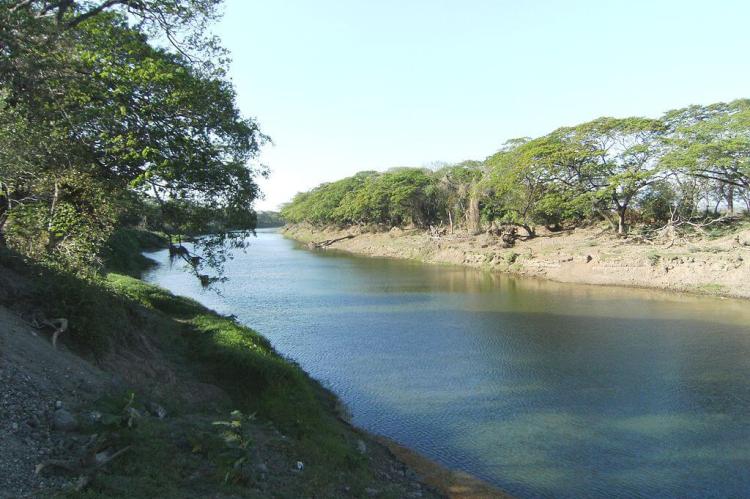Water Bodies of Costa Rica
Costa Rica has a diverse natural landscape with beautiful water bodies. It is bordered by the Pacific Ocean and the Caribbean Sea, offering stunning coastlines and pristine beaches. The rivers provide fertile valleys, and picturesque lakes and lagoons harbor diverse ecosystems and wildlife.
Water Bodies of Costa Rica
Costa Rica's natural landscape is blessed with a rich variety of water bodies. It is bordered by the Pacific Ocean on one side and the Caribbean Sea on the other, offering stunning coastlines and pristine beaches. The country is home to several notable rivers, including the Tempisque, Sarapiquí, and Savegre, which provide fertile valleys and opportunities for water-based activities.
Costa Rica's inland features picturesque lakes and lagoons, such as Lake Arenal and Tortuguero Lagoon, harboring diverse ecosystems and wildlife. With its abundant water bodies, Costa Rica offers visitors a wealth of recreational, ecological, and scenic experiences.
Gulfs and Bays
Coronado Bay: Coronado Bay is a bay of the Pacific Ocean on the southwestern coast of Costa Rica, which lies north of the Osa Peninsula.
Culebra Bay: With its snake-like shape, Culebra Bay attracts many international and national tourists. In addition, this natural area within northwestern Costa Rica's Gulf of Papagayo is marketed as a biological model due to the preservation of its natural environment and the wide variety of species inhabiting this region.
Golfo Dulce: Golfo Dulce lies between the Osa Peninsula and the southern Pacific Coast of Costa Rica. It takes its name from the large amount of freshwater that flows into it from four rivers whose mouths harbor large areas of protected mangroves.
Gulf of Nicoya: The Gulf of Nicoya is an inlet that indents the west-central part of the Pacific coast of Costa Rica. The Gulf separates the Nicoya Peninsula from the mainland of Costa Rica.
Gulf of Papagayo: The Gulf of Papagayo is a large body of water off Guanacaste province and the northwestern coast of Costa Rica. The Gulf and its coastline are part of a significant tourism project by Costa Rica's government.
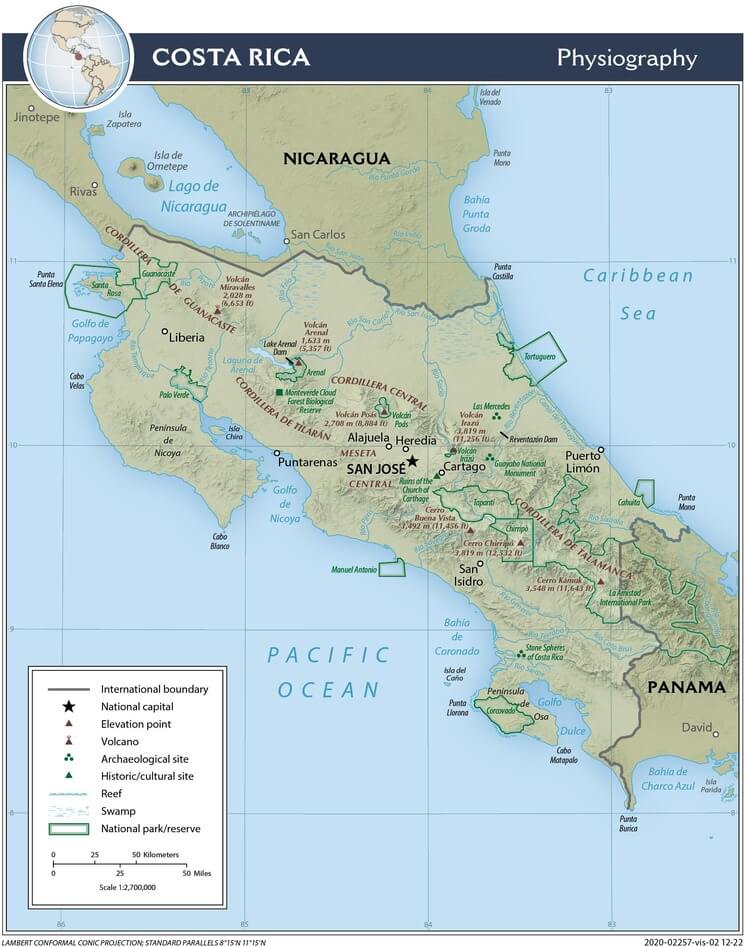
Costa Rica physiographic map
Notable Lakes and Lagoons
Laguna Caliente: Laguna Caliente is a hydrothermal crater lake of the Poás volcano in north-central Costa Rica, within Alajuela Province. It is located at 2,300 m (7,500 ft) asl. It is approximately 300 m (985 ft) wide and 30 m (98 ft) deep and is one of the world's most acidic lakes.
Laguna Corcovado: Laguna Corcovado is a massive lagoon in the isolated heart of the Corcovado National Park on the Osa Peninsula in southwestern Costa Rica.
Lake Arenal: Lake Arenal is located in the northern highlands at the base of the Arenal Volcano and is the largest landlocked lake in Costa Rica, covering approximately 85 sq km (33 sq mi) with a depth of up to 60 m (200 ft). It was enlarged up to three times its original size with the construction of a hydroelectric dam in 1979. The lake is a popular recreation and fishing destination.
Lake Bonilla and Lake Bonillita: Lakes Bonilla and Bonillita are freshwater lakes on private property next to the Reventazón River in Costa Rica's Limón Province.
Lake Bosque Alegre: Lake Bosque Alegre is a freshwater crater lake located in the northern highlands of Costa Rica. It is part of a complex of crater lakes, including Lake Hule and Lake Congo, part of the Bosque Alegre Wildlife Refuge.
Lake Botos: Lake Botos is a cold and clear green-water crater lake with a diameter of 370 m (1,200 ft). It is located in an inactive crater of the Poás Volcano, surrounded by a cloud forest, within Poás National Park in north-central Costa Rica.
Lake Cachí: Lake Cachí is an artificial lake created by the Cachí Dam, north of Tapantí - Macizo de la Muerte National Park, on the edge of the Cordillera de Talmanaca in central Costa Rica. The town of Cachí lies near the lake's eastern bank.
Lake Cerro Chato: Lake Cerro Chato is an emerald green crater lake at the 1,140 m (3,740 ft) summit of an extinct volcano in Alajuela Province, located southeast of Volcán Arenal in northwestern Costa Rica.
Lake Congo: Lake Congo is a freshwater crater lake located in the northern highlands of Costa Rica. It is part of a complex of crater lakes, including Lake Hule and Lake Bosque Alegre in the Bosque Alegre Wildlife Refuge.
Lake Cote: Lake Cote, the largest natural lake in Costa Rica, is between Arenal Volcano and Tenorio Volcano in northern Costa Rica's Alajuela Province. It is a crater lake with a diameter of 1 km (3,280 ft) and a maximum depth of 18 m (59 ft) at its center.
Lake Danta: Lake Danta is a lake in an inactive crater of the Tenorio Volcano in northern Costa Rica.
Lake Hule: Lake Hule is a freshwater crater lake located in the northern highlands of Costa Rica. It is part of a complex of crater lakes, including Lake Bosque Alegre and Lake Congo, part of the Bosque Alegre Wildlife Refuge.
Lake Lancaster Abajo and Lake Lancaster Arriba: Lake Lancaster Abajo and Lake Lancaster Arriba are located in Costa Rica's Limon Province, collectively called the Lancaster Lakes. They are located on private property next to the Reventazón River.
Lake Poco Sol: Lake Poco Sol, or Laguna Pocosol, is a volcanic lake in the Cordillera de Tilarán of northwestern Costa Rica. It lies at an altitude of 789 m (2,589 ft) in a depression 200 m (660 ft) wide. The depth of the lake is approximately 11.5 m (38 ft).
Tortuguero Lagoon: Tortuguero Lagoon, located in northeastern Costa Rica, is a captivating water body renowned for its rich biodiversity and natural beauty. It forms part of the larger Tortuguero National Park, a protected area known for its nesting sea turtles and diverse wildlife. The lagoon is characterized by tranquil waters surrounded by dense rainforests, mangrove swamps, and winding canals.
Notable Rivers
Arenal River: The Arenal River is a tributary of the San Carlos River in north-central Costa Rica. In its upper part, the Presa Sangregado Dam forms Lake Arenal.
Celeste River: The Celeste River is located in Tenorio Volcano National Park, notable for its distinctive turquoise coloration.
Colorado River: The Colorado River is a distributary of the San Juan River, which flows 96 km (60 mi) towards the Caribbean Sea in the northern parts of the Heredia and Limón Provinces. The surrounding rainforest is protected as part of the Barra del Colorado Wildlife Refuge. It is a well-known tourist destination, particularly for fishing.
Corobici River: The Corobici River is a tributary of the Tempisque River. Originating from the southern slopes of the Tenorio Volcano in the Guanacaste Mountains, the river flows southerly, descending through tropical dry forest and pastures before joining the Tenorio River, which winds its way to the Bebedero River and the Tempisque River among the mangroves.
Estrella River: The Estrella River flows out of the Cordillera de Talamanca and drains into the Caribbean Sea at Bonifacio.
Frío River: The Frío River (Río Frío) rises on the slopes of the Tenorio volcano, passes through the plains of northern Costa Rica, and flows into the San Juan River in Nicaragua. Along the way, it passes through the Caño Negro Wildlife Refuge. The slow-moving river is surrounded by wetlands that flood in the rainy season, forming a vast lake.
General River: The General River (Río General) is in southeastern Costa Rica. It rises in the Talamanca mountain range and joins the Coto Brus River to form the Térraba River, the largest in the country. The river provides irrigation to the Valle del General, an essential coffee-growing region where the most populated city, San Isidro del General, is located.
Orosí River: The Orosi River is located near the Cordillera de Talamanca. Its watershed contains one of the rainiest areas of Costa Rica, with annual rainfalls of up to 7100 mm (280 in). It flows through Tapantí - Macizo de la Muerte National Park and drains into Lake Cachí, the site of the Cachí Dam.
Pacuare River: The Pacuare River rises in the Cordillera de Talamanca in Costa Rica's Limón Province. It flows approximately 108 km (67 mi) until it empties into the Caribbean Sea. It is famous for whitewater rafting and kayaking.
Parismina River: The Parismina River rises near the Turrialba volcano in Costa Rica's Limón Province. It is navigable for 21 km (13 mi) from its confluence with the Reventazón River to its mouth at Boca del Parismina on the Caribbean coast.
Pacuare River: The Pacuare River is located approximately 125 km (77 mi) east of San Jose on Costa Rica's Caribbean side. The river features canyons, waterfalls, and an indigenous village on its banks.
Reventazón River: The Reventazón River rises at the Irazú Volcano, passes through the east side of the Central Valley for approximately 145 km (90 mi) and joins the Parismina River in the Caribbean coastal plains, forming what is known as the Reventazón-Parismina.
Sabogal River: The Sabogal River is one of the main tributaries of the Frío River.
San Carlos River: The San Carlos River in Costa Rica's Alajuela Province drains into the San Juan River, which drains into the Caribbean Sea.
San Juan River: The San Juan River, also known as El Desaguadero ("the drain"), flows east out of Lake Nicaragua for 192 km (199 mi) into the Caribbean Sea, forming part of the border between Costa Rica and Nicaragua.
Sapoá River: The Sapoá River's headwaters are in Guanacaste National Park in northern Costa Rica, from where it flows north, eventually emptying into Lake Nicaragua.
Sarapiquí River: The Sarapiquí River is a tributary of the San Juan River and forms the eastern border of Sarapiquí Canton. The river is prone to flooding, and the area around the river is mostly lowland tropical rainforest. Nevertheless, the river is navigable, a local trading artery supporting fishing and tourism activity.
Savegre River: The Savegre River rises in the Cordillera de Talamanca and generally flows southwest through rugged topography to the Pacific Ocean. Its basin is one of the most eco-diverse regions of Costa Rica, much of which is protected by Los Quetzales National Park and Manuel Antonio National Park. In 2017, UNESCO declared the Savegre River basin a Biosphere Reserve.
Sixaola River: The Sixaola River is in southern Limón Province, Costa Rica. It flows from the Cordillera de Talamanca easterly to the Caribbean Sea. The river's headwaters are part of the La Amistad International Park and Biosphere Reserve. The river forms the border between Limón Province, Costa Rica and Bocas del Toro Province, Panama, for part of its length.
Sucio River: The Sucio River rises at the Irazú Volcano, converging with the Sarapiquí River before joining the San Juan River and emptying into the Caribbean Sea.
Suerte River: The Suerte River flows through Costa Rica's lowland Caribbean rainforest and agricultural plantations, merges with the Tortuguero River, flows through the canals of Tortuguero National Park, and empties into the Caribbean Sea.
Tárcoles River: The Tárcoles River, also known as the Río Grande de Tarcoles, in Costa Rica, originates on the southern slopes of the Cordillera Central and flows south-westerly through the country's Central Pacific region before emptying into the Pacific Ocean at the Gulf of Nicoya. The river is 111 km (69 mi) long, and its watershed covers an area of approximately 2,000 sq km (772 sq mi), encompassing over 50% of the country's population. In addition to its agricultural significance, the river also generates electricity. It is, however, polluted due to the contaminated waste it carries.
Telire River: The Telire River is located in the province of Limón, in the eastern part of Costa Rica. The Telire drains the entire east flank of Mount Chirripó, the highest peak in Costa Rica. At its confluence with the Yorkin River, it becomes the Sixaola River, which forms part of the border with Panama.
Tempisque River: The Tempisque River rises in the Guanacaste mountain range between the Orosí and Rincón de la Vieja volcanoes and empties into the Gulf of Nicoya on Costa Rica's northwest coast. At 144 km (89 mi) in length, it is Costa Rica's third longest river.
Tenorio River: The Tenorio River rises near the Tenorio Volcano in northwestern Costa Rica. It flows southerly to join the Corobicí River before emptying into the Gulf of Nicoya. It is a famous river for whitewater rafting.
Térraba River: The Térraba River, also known as the Río Grande de Térraba, is the largest in Costa Rica at approximately 160 km (100 mi) in length. It is born on Mount Chirripó and meanders through the southwestern province of Puntarenas, specifically the Brunca region bordering Panama. Térraba refers to the indigenous community that lives on its shores. The Térraba River basin is the largest hydrographic basin in Costa Rica, covering approximately 5,000 sq km (1,930 sq mi).
Toro River: The Toro River rises at the Poas Volcano. It flows in a northerly direction before joining the Sarapiqui and San Juan rivers, eventually reaching the northeastern coast of the Caribbean Sea.
Tortuguero River: The Tortuguero River is located near the northeastern corner of Costa Rica, where it meanders through Tortuguero National Park and into the Caribbean Sea.
Yorkin River: The Yorkin River forms part of the border between Costa Rica and Panama.
